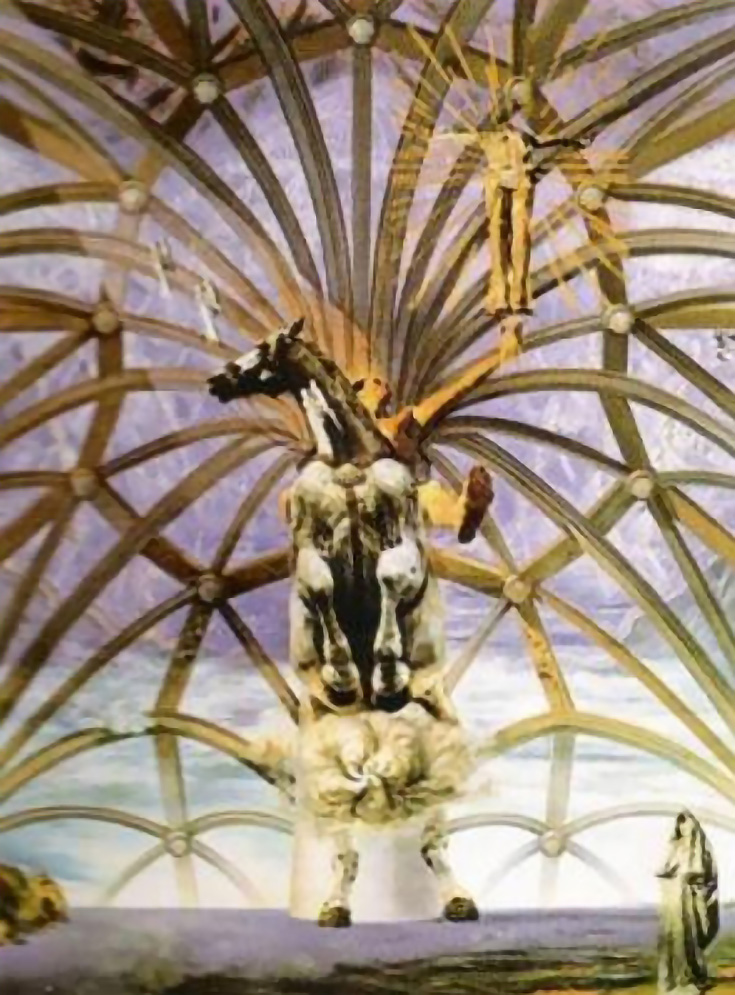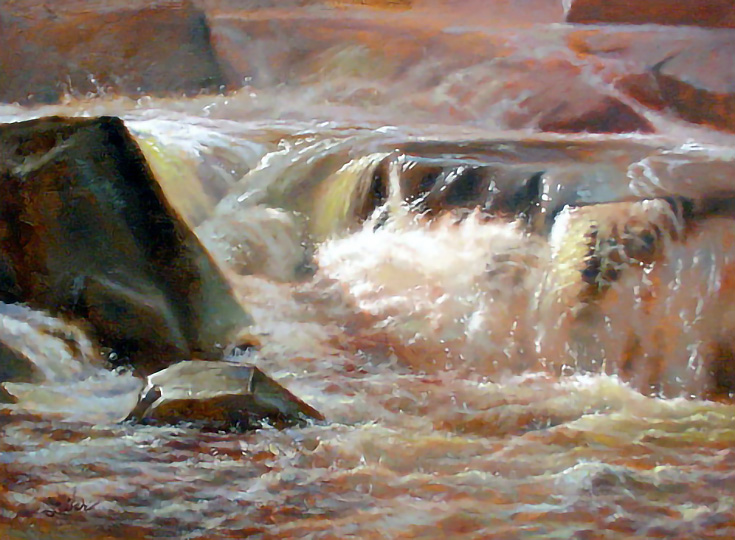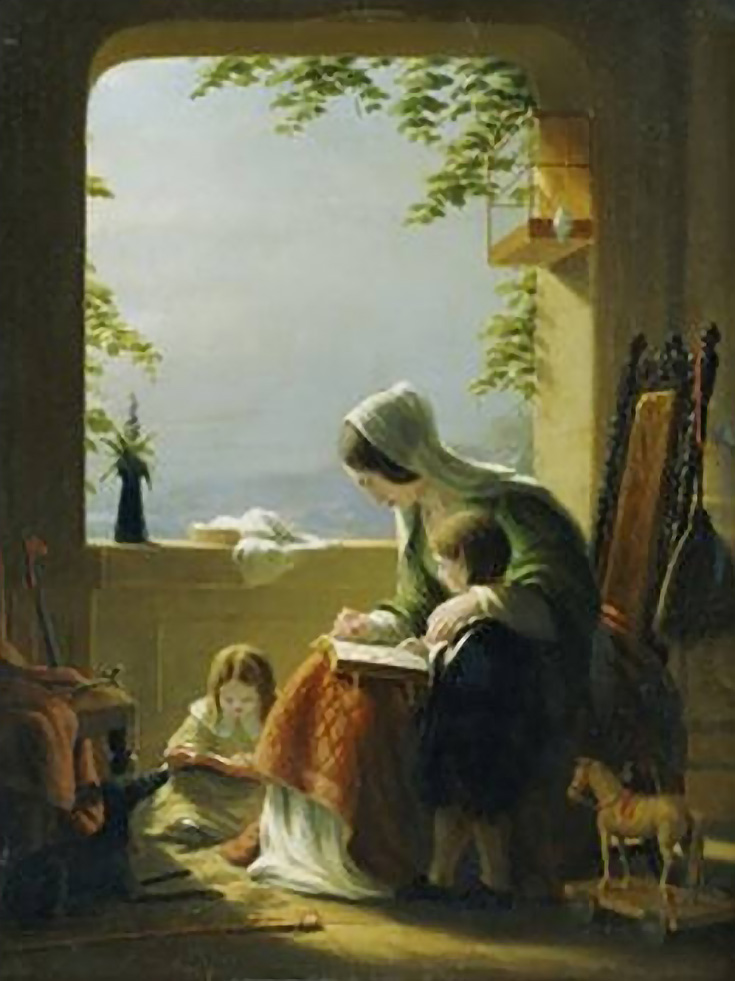Artists tend to be natural rebels. . . many of us take delight in getting around traditional artistic “rules” especially if we can do it in a clever way.
For instance, we’ve all been taught to avoid placing a subject directly in the center of our compositions—and rightfully so—because placing the focal point of a painting in the middle of your canvas will often make it downright dull to look at.
As a result, most artists use asymmetrical compositions and keep from centering anything. But, as you’ll see in a minute, there are always exceptions to the rule.
Asymmetrical paintings
When building an asymmetrical composition, artists depend upon their sense of balance to guide their decisions. Size, shape, edges, color, direction, texture and value all play a part.
The artist must avoid placing subjects directly in the middle of the canvas, or in evenly-spaced patterns, and must keep the horizon line and any vertical lines from crossing the canvas at its centerpoint.
This solution is often very aesthetically pleasing—at least as long as the artist has a good eye for asymmetrical balance.
Symmetrical paintings
If you want an easy way to break the rules, just follow the lead of Salvador Dali. In his painting, Santiago El Grande, Dali based his entire composition around a central, balanced, focal point.
Just as Dali did here, any artist can use symmetrical balance to create their own mirror-image composition. The result (perhaps because it breaks the centering rule so intentionally) is often very striking.
Asymmetrical paintings with a focal point
Of course, some artists have found clever ways to combine asymmetry along with a central focal point.
The most common strategy here involves placing the focal point of the painting directly in the middle of the canvas, then creating a strong visual path that circles around it rather than leading to it.
Painter Larry Seiler pulls off this technique quite well in his painting, Strong Falls.
Notice how the most active part of the painting, the falls, appear almost dead-center?
But most viewers would never realize that potentially awkward central placement because of the strong visual path circling around it.
Our eyes are pulled down and across by the weight of the big boulder on the left, then carried upward and over again by the shadow areas within the painting and the flow of water around the central falls.
Winslow Homer uses a similar tactic in his famous painting, The Herring Net.
Even though the primary focus is right in the middle of the canvas, our eyes are drawn away from the centerpoint via the netted fish and lighter areas of water on the right.
Other objects, like the barrel floating in front, the distant boats, and even the angled ocean swells keep our eyes circling around the center of the image.
Hudson River School painter Robert Weir did the same thing in Mother’s Lessons—see if you can find the circular paths he created around the mother’s head.
Start by following her gaze downward—your eyes will naturally travel a circular path from her right hand to her left, then to her left shoulder, top of head and so on.
If you’ve never painted using this type of composition, I’d encourage you to try it. Simply place your most important image in the center, then find ways to pull attention away from it by building a visual path around it with points of emphasis.
You may be surprised at the amount of visual interest you can create with just this one compositional technique.
This post may contain affiliate links.






